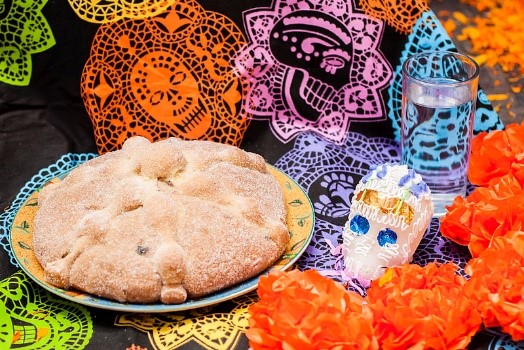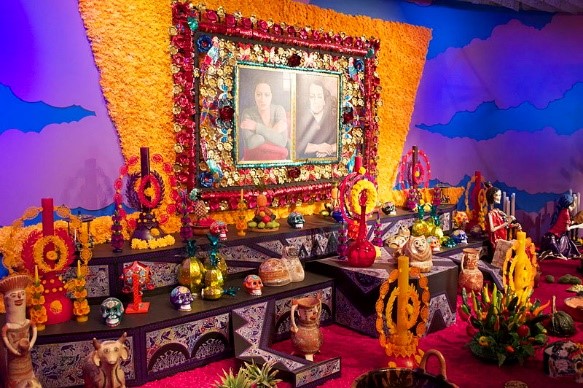By: Ivonne Juraidini 
Día de los Muertos, or Day of the Dead, is a Mexican holiday that commemorates the lives of deceased loved ones. It is a tradition that originated from indigenous rituals and eventually blended with Catholic elements as a result of Spanish influence. The holiday takes place over two days: November 1st and November 2nd, during which festivals, altars, and sugar skulls are seen all around. Altars called ofrendas honoring the deceased and celebrating their journeys are decorated with offerings such as water, the deceased’s favorite food, and photos. Orange marigolds and pan de muerto can be commonly found on the altars. The point of the altar is to offer all the essentials the deceased may need on their journey to rest.

One of the most recognized symbols of Día de los Muertos is the skull. During the celebration especially on the public festivals, many will paint their face in resemblance to a skull or the lady of the dead, La Catrina. This famous skull image has created a sense of satire towards the topic of death. The idea behind this is to not fear death but instead become familiar with it. To reinforce this, most skulls and skeletons are portrayed with bright colors, fancy clothes, and in festive situations.
Food plays a large role in the celebration. Pan de muerto is a typical sweet bread that is sold from mid-October to the beginning of November. The round-shaped bread is sprinkled with sugar and decorated with bone shapes in honor of the dead. Sugar skulls, used mostly for ornamentation rather than consumption, can be found in the street markets, varying in size but usually with elaborate and colorful decoration. Pulque, a popular drink, is a sweet fermented beverage made from maguey sap. To pair the pan de muerto, many will drink atole which is a thin warm drink made from corn flour that comes in a variety of flavors such as cinnamon, chocolate, or strawberry.
Throughout Mexico, festivals and parades take place to celebrate. In the city of Aguascalientes, there is a week-long festival dedicated to skulls; in Teotihuacan one can find Cumbre de Catrinas, or Catrina Summit, a festival in which the pyramids are illuminated at night creating a show of the history of the holiday; and in Mexico City takes place one the largest street parades with live music, food, and elaborate costumes. Large cemeteries can also be found decorated and hosting families to drink tequila and pulque on the night of November 2nd. UNESCO has declared Día de los Muertos as Intangible Cultural Heritage of Humanity, making it one of Mexico’s biggest prides.

